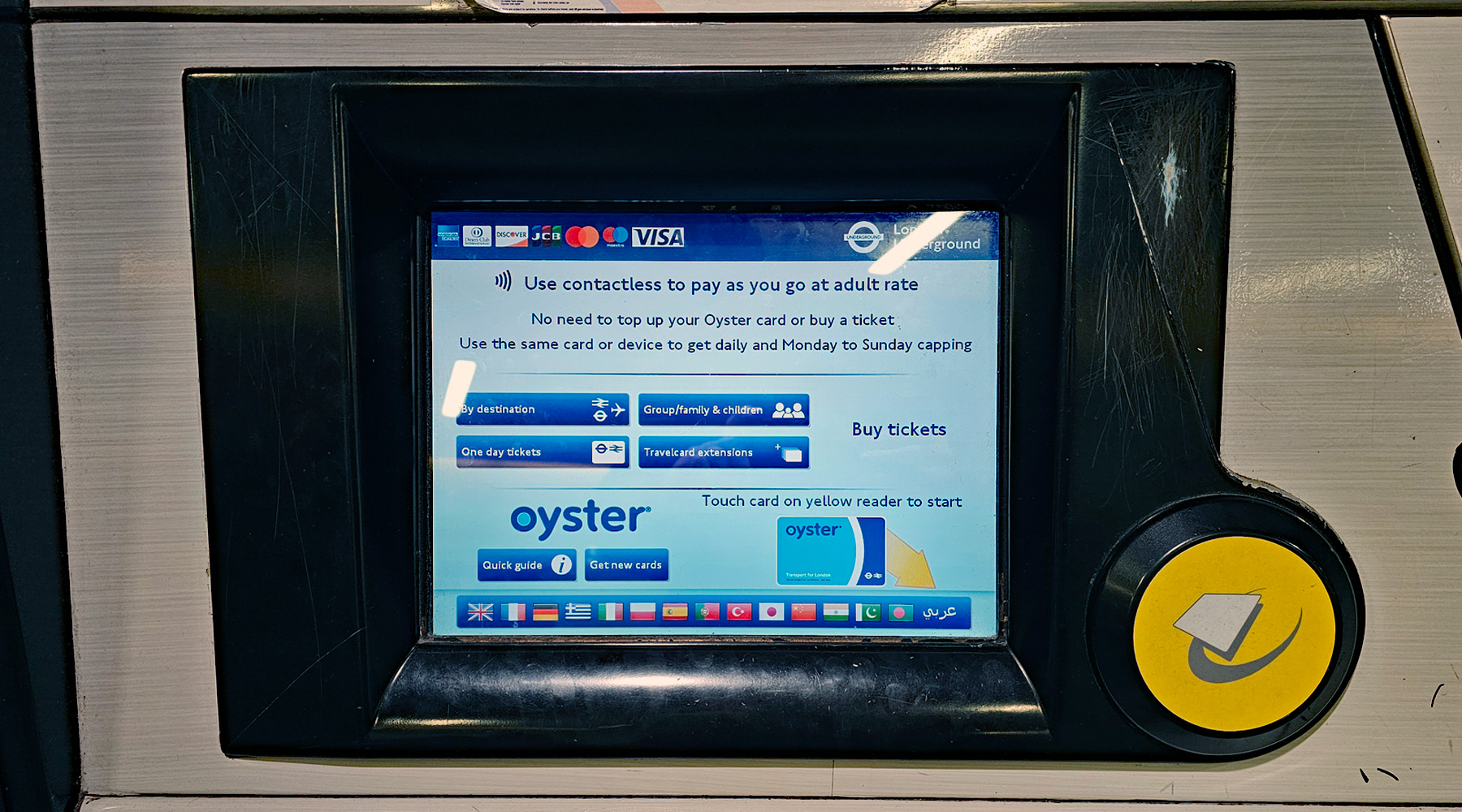Transport for London (TfL) has seen a drop in the sale of paper tickets after it made a small change to the ticket machines in London Underground stations.
The change took place last September during a routine fares update to the ticket machines, and the sales of paper tickets dropped overnight by around a third compared to how many were being sold before.
However, that was entirely intentional.
The change was deliberate, intended to reduce the sale of paper tickets by encouraging people to use contactless payments instead. These are cheaper for the customer and mean fewer magnetic stripe paper ticket sales for TfL.
It followed staff observations that people were requesting single or return paper tickets but then paying for them with a contactless card — so why not encourage them to use the contactless card at the ticket barrier instead?
What TfL has done is add a pop-up message on the ticket-selling machines, so if you try to buy a single or return ticket instead of a travelcard, it will suggest using a contactless card instead.
The Passenger Operated Machine (POM), to use the TfL name for the ticket machines, doesn’t show the pop-up for every journey that they can sell tickets for because not every destination accepts contactless PAYG tickets, but those that can will get the message. Over time, as more National Rail stations are added to the contactless payments system, the ticket machines will be updated to include them in the messaging.
Since the change was introduced in September 2023, TfL has seen a noticeable drop in paper ticket sales.
So the change worked.
Apart from fitting in with TfL’s aim of reducing the sales of magnetic stripe tickets, the move would have reduced the fares that customers pay to travel around London.
Arguably, not offering the option to save money would put more money in TfL’s coffers, but there’s a trade-off in that offering more expensive trips will deter casual visitors from using public transport. If they see the fares are lower than expected, customers are more likely to travel more often, and if they see TfL is being upfront about fares, lingering concerns about using contactless will be reduced.
To pick a random example, an off-peak trip from Paddington to Canary Wharf would cost £6.70 if buying a paper ticket but £2.80 if using contactless payments.
So a small change that a regular London traveller would be unlikely to have noticed is reducing queues at ticket machines for everyone else.
SUPPORT THIS WEBSITE
This website has been running now for over a decade, and while advertising revenue contributes to funding the website, it doesn’t cover the costs. That is why I have set up a facility with DonorBox where you can contribute to the costs of the website and time invested in writing and research for the news articles.
It’s very similar to the way The Guardian and many smaller websites are now seeking to generate an income in the face of rising costs and declining advertising.
Whether it’s a one-off donation or a regular giver, every additional support goes a long way to covering the running costs of this website, and keeping you regularly topped up doses of Londony news and facts.
If you like what you read on here, then please support the website here.
Thank you
